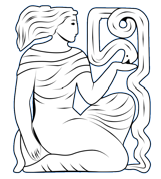By Fabian Macpherson
While medical archives and museums tend to be filled with the names of (predominantly male) surgeons and physicians, those of nurses are liable to be forgotten. In the case of St George’s, University of London (formerly St George’s Hospital Medical School: hereafter SGUL), this was complicated by institutional divisions: nurses were not trained within the medical school, so their records were not officially preserved by it, while the separate School of Nursing was abolished in the 1990s, its function transferred to a joint faculty with Kingston University.
In the meantime, the relocation of the hospital from its historic site at Hyde Park Corner to the new one at Tooting (a less glamorous corner of south west London) led to an increased sense of the fragility of historical memory. The retired nurses of St George’s Nurses’ League were concerned that their corporate identity would fade, as would the memory of their much-respected matron Dame Muriel Powell (1914-1978). To counter this, they collected papers and memorabilia relating to Powell and others, which – combined with the Nurses’ Voices oral history project undertaken by researchers at Kingston in the early 2000s – would form the basis of the SGUL nursing collection.
The Art of Nursing: 150 years of St George’s Nursing Education
(See above link for the poster introducing the St George’s nursing collection, presented at the 2023 UKAHN conference)
Previously inaccessible to researchers, this collection is now being catalogued with the aid of an Archives Revealed grant from the National Archives. Although the training of nurses at St George’s did stretch back to the 1860s, most of the earlier hospital records were transferred to London Metropolitan Archives in 2005, which means that the bulk of the remaining SGUL collection dates from the mid-to-late twentieth century. This period covers the tenure of Powell, who looms large, but also the advent and restructuring of the NHS, and the somewhat controversial changes to the nursing profession – such as replacing the title of matron with Chief Nursing Officer – in the wake of the Salmon Report of 1966.
There are several stories of nursing that can be retraced through the St George’s collection. One revolves around Hyde Park Corner, where most of the Nurses’ League members had worked. The oral history interviews (of which there are over 100) are full of largely fond recollections of the old building and its inhabitants, in spite of the strict hierarchy which led to frequent reprimands from stern ward sisters and domineering doctors. Amid the descriptions of mundane daily routine there are flickers of the fantastical: anecdotes about the eccentric matron Helen Hanks, Powell’s predecessor, who lived on the premises with her Pekingese dogs and claimed to have had a spiritual premonition that the hospital would be spared from bombing during the war, or tales of the ghostly ‘grey lady’ who supposedly haunted the wards at night.
The nursing workforce at Hyde Park Corner tended to reflect a certain demographic: middle-class, white, largely Anglican. Only a few miles away, however, at lesser-known institutions south of the river, the pattern of recruitment differed: many of the nurses at the Grove Fever Hospital in Tooting were migrants from Ireland, for instance, while St James’ Hospital in Balham recruited a new wave of Commonwealth migrants from the Caribbean and West Africa. This information can be ascertained from the training records of these hospitals, which form part of the collection because they were eventually absorbed into St George’s. Alongside the training records there are class photographs, which document the changing composition of the profession and of British society more broadly (though it should be noted that there was more ethnic diversity among the ‘state enrolled’ nurses than the state registered ones).
The stories of individual nurses are thus interwoven with broader institutional and national histories. Items of personal memorabilia retained for their nostalgia value – a signed belt, a Christmas menu, or a ticket for the 1953 coronation procession – nevertheless help to flesh out the cultural context of the period, while records such as lecture registers and exam papers can be used to chart the evolution of the nursing curriculum over time. Under Powell in the 1960s St George’s experimented with a new two plus one course structure that anticipated the shift of nursing training from hospitals into universities, and it was also part of a Salmon pilot scheme that led to new job titles and management structures. The St George’s nursing collection therefore contains much material that should be of potential interest to historians of nursing in the twentieth century.
Cataloguing of the collection is currently ongoing, but it is expected to be completed (and searchable via the online catalogue) in early 2024. In the meantime, enquiries can be directed to archives@sgul.ac.uk. The catalogue website – which also incorporates the St George’s Post Mortem Project, another useful medical history resource – can be found at: https://archives.sgul.ac.uk.
